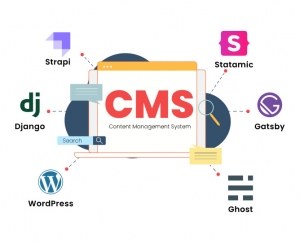Exporting data from Salesforce is critical to help organizations analyze information, back up records, and transfer data to other platforms. To the newcomers, getting an insight and learning how to go about it is always a boost. we will give you detailed instructions on how to export data from Salesforce with no issues every time.
Understand Your Data Needs
Whether one is going to be exporting data or not, it is advisable to make certain that one understands what one wants to export and the reasons for exporting it. Are you exporting customer information, sales data, or other specific records? It helps one to choose the right fields of study and eliminates the unnecessary information that one may be intermingling between. Another factor to consider is the size and density of the data since they will determine the approach you will use to export them.
Choose the Right Export Method
Salesforce offers several data export options, each suited to different needs:
Data Export Wizard: These are features that are available in Salesforce and this is very easy to use especially for new users. It also has an interface that enables one to export properties at a weekly or monthly interval. You can export all data or you can sort objects and export only those, you need.
Data Loader: Available since salesforce.com version 13, the Data Loader is a more sophisticated instrument that is especially useful for exporting lots of data. It has a clear and simple approach to exporting data based on queries and supports the scheduling of data exports.
Report Exports: The best way in this case is to export the reports in CSV format where one can get only the particular information required. To view exactly what you need, you can create a report with filters and display only the requested information.
Leverage Filters and SOQL Queries
In particular, filters and the query language called SOQL help to optimize the export of data considerably. Filters help to export only the needed data, which decreases the size of the file and its complexity. For instance, filtering could be done based on date, geographical location, or status. SOQL queries are even more flexible as they allow for specifying criteria and fields for the operations performed.
Schedule Regular Exports
It is always wise to schedule data exports frequently to ensure we are dealing with updated backups. This is especially vital for the backup of data in situations where the files being worked on get deleted or the system crashes. To export data in a fully automated process, it is also possible to schedule the export for weekly or monthly windows thus always having a relatively fresh copy of data.
Secure Your Data
To be specific, the protection of data is crucial when it comes to exports. Special care should always be taken to guarantee that exported data files are secure only to the permitted individuals. Where files are shared, it is recommended that passwords are created that are difficult to guess and if the data is sensitive then it can be encrypted. Since data is important to most of the applications, access control must be considered, and you should configure the options accessible through general settings on Salesforce.
Verify Data Accuracy
When the data is generated and before it is exported, ensure it is the correct one. Scan for any disparities, repetitions, or omitted fields. This can be accomplished with validation rules that only allow certain fields to be updated in Salesforce or with data quality tools not made by Salesforce. Consistent quality of data is important for effective business management as well as the quality of the database in general.
Test Your Export Process
As a first step into exporting data from Salesforce, begin with a trial run. Use several records to test the export functionality and potential problems as well. This way the testing helps to make changes, tweak filters or queries, and makes sure that the overall export is not burdened with much data and is just perfect for the requirement at hand.
Use Salesforce Data Loader for Large Exports
Salesforce Data Loader provides you with the best tool to handle loads of data. In terms of exporting, it is capable of transferring millions of records in a highly efficient manner. The tool also has a built-in command-line interface that enables automation, which makes it suitable for handling large volumes of data.
Stay Updated on Salesforce Features
Salesforce updates its platform frequently and makes frequent additions to it in terms of enhancements. Being aware of these changes will enable you to improve your data exporting procedures. Salesforce regularly releases notes together with field updates; it is also wise to join a community at Salesforce, follow their release notes, and possibly subscribe to updates from Sastorm Software for the latest tips and best practices.
Consult with Experts
In case of any uncertainties, do not be afraid to get professional advice from experienced Salesforce personnel or an authorized consulting partner, Sastorm Software. They are capable of offering more personalized consultancy and services suited to your requirements. For instance, while creating automated exports or dealing with challenging data transfers, help from a specialist is much more helpful.
Conclusion
Learning how to export data from Salesforce is a useful skill that can improve your organization's data management. Therefore, by incorporating these tips supported by experts in exporting data, beginners will be confident and efficient in the process. However, before going ahead with data exports, you need to ensure that you are in touch with your data obligations, know your data requirements, select the proper technique, and secure your data. If you are interested in receiving a more direct approach, feel free to contact our experts at Sastorm Software for the best way to manage your Salesforce information.






